
How to Use Wemos D1 Mini V3: Examples, Pinouts, and Specs
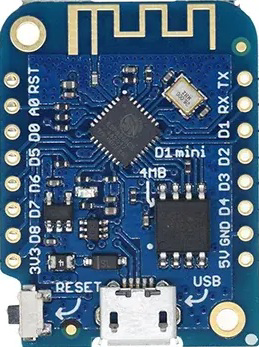
 Design with Wemos D1 Mini V3 in Cirkit Designer
Design with Wemos D1 Mini V3 in Cirkit DesignerIntroduction
The Wemos D1 Mini V3 is a compact and versatile Wi-Fi development board based on the ESP8266 microcontroller. It is designed for IoT (Internet of Things) applications, offering built-in Wi-Fi connectivity and a range of GPIO pins for interfacing with sensors, actuators, and other peripherals. Its small form factor and USB programming interface make it an excellent choice for both beginners and experienced developers working on smart home devices, wireless data logging, or other connected projects.
Explore Projects Built with Wemos D1 Mini V3
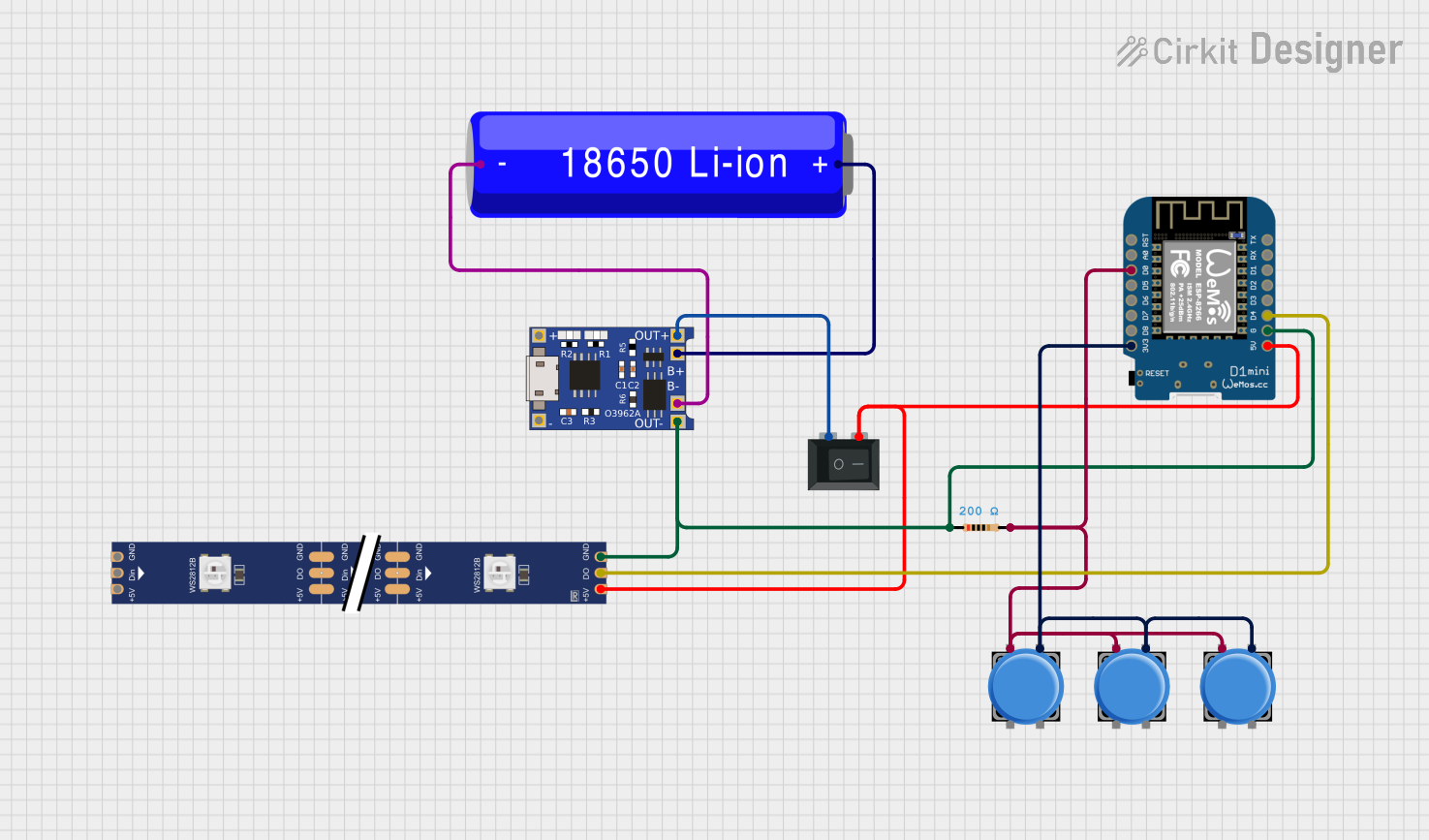
 Open Project in Cirkit Designer
Open Project in Cirkit Designer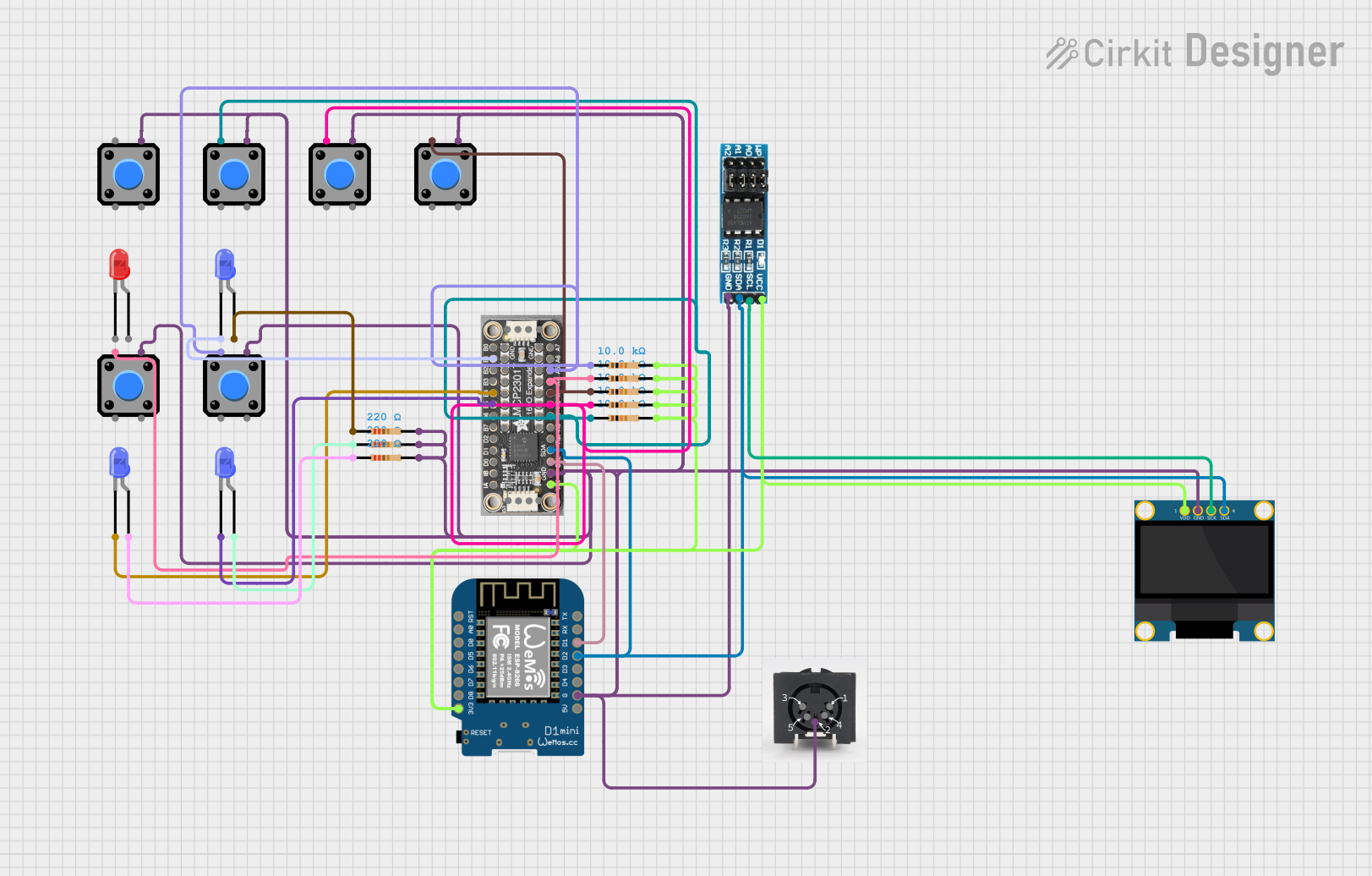
 Open Project in Cirkit Designer
Open Project in Cirkit Designer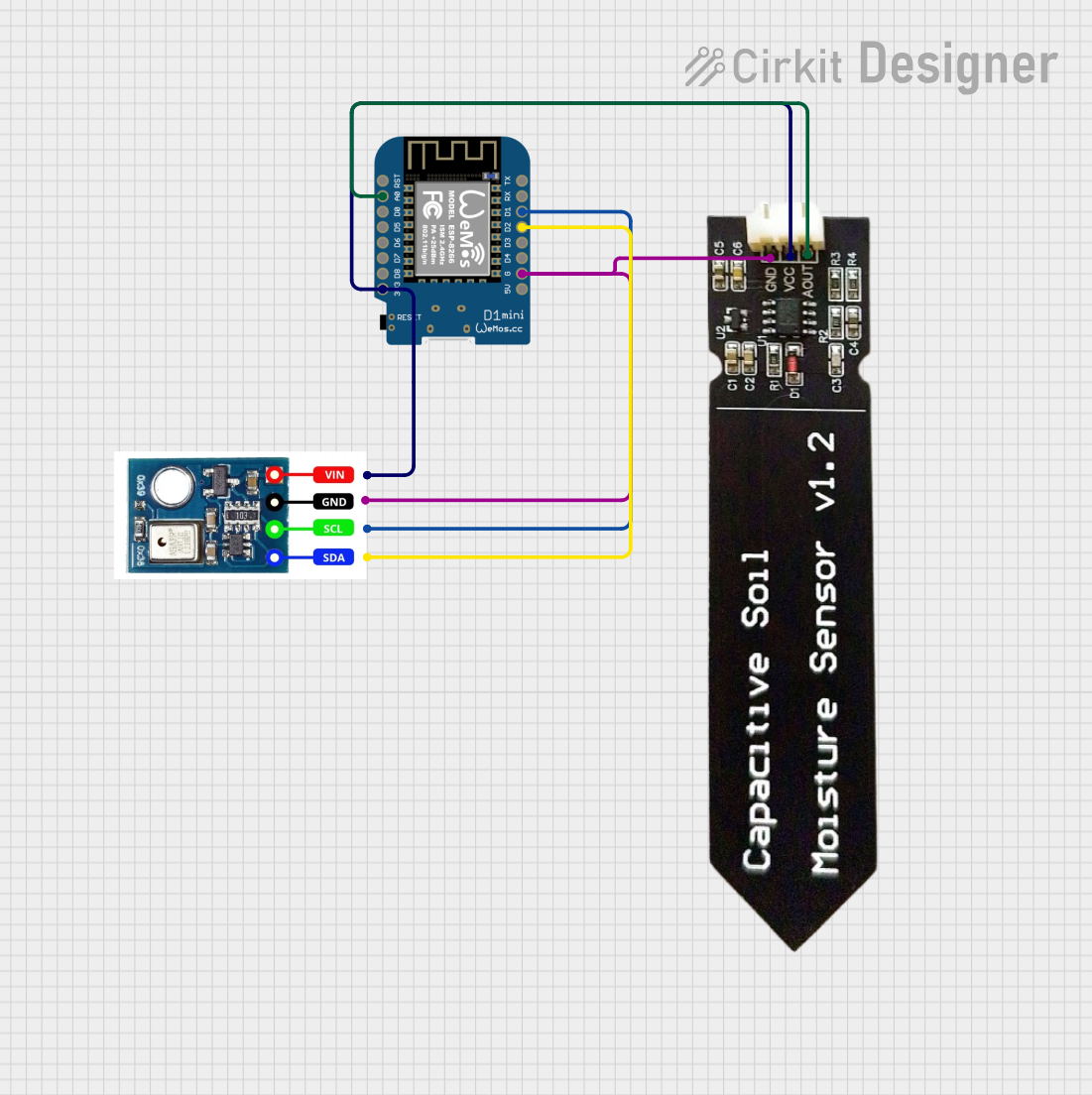
 Open Project in Cirkit Designer
Open Project in Cirkit Designer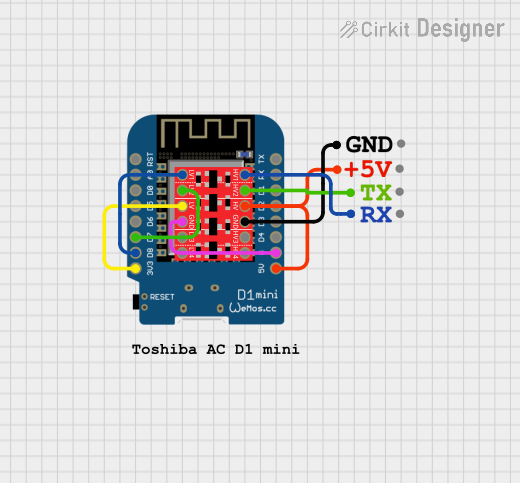
 Open Project in Cirkit Designer
Open Project in Cirkit DesignerExplore Projects Built with Wemos D1 Mini V3

 Open Project in Cirkit Designer
Open Project in Cirkit Designer
 Open Project in Cirkit Designer
Open Project in Cirkit Designer
 Open Project in Cirkit Designer
Open Project in Cirkit Designer
 Open Project in Cirkit Designer
Open Project in Cirkit DesignerCommon Applications and Use Cases
- IoT devices and smart home automation
- Wireless sensor networks
- Remote data logging and monitoring
- Prototyping Wi-Fi-enabled projects
- Controlling devices via mobile apps or web interfaces
Technical Specifications
The following table outlines the key technical details of the Wemos D1 Mini V3:
| Parameter | Specification |
|---|---|
| Microcontroller | ESP8266EX |
| Operating Voltage | 3.3V |
| Input Voltage (USB) | 5V |
| Flash Memory | 4MB |
| Clock Speed | 80 MHz (default) / 160 MHz (optional) |
| Wi-Fi Standard | 802.11 b/g/n |
| GPIO Pins | 11 (Digital I/O) |
| ADC Resolution | 10-bit (1 analog input pin) |
| USB Interface | Micro-USB |
| Dimensions | 34.2mm x 25.6mm |
Pin Configuration and Descriptions
The Wemos D1 Mini V3 features a total of 16 pins, including power, ground, and GPIO pins. The table below provides a detailed description of each pin:
| Pin | Label | Description |
|---|---|---|
| 1 | 3V3 | 3.3V power output |
| 2 | G | Ground |
| 3 | D0 | GPIO16 (Digital I/O) |
| 4 | D1 | GPIO5 (Digital I/O, I2C SCL) |
| 5 | D2 | GPIO4 (Digital I/O, I2C SDA) |
| 6 | D3 | GPIO0 (Digital I/O, pull-up) |
| 7 | D4 | GPIO2 (Digital I/O, pull-up, built-in LED) |
| 8 | D5 | GPIO14 (Digital I/O, SPI SCK) |
| 9 | D6 | GPIO12 (Digital I/O, SPI MISO) |
| 10 | D7 | GPIO13 (Digital I/O, SPI MOSI) |
| 11 | D8 | GPIO15 (Digital I/O, SPI CS, pull-down) |
| 12 | RX | UART RX (Serial input) |
| 13 | TX | UART TX (Serial output) |
| 14 | A0 | Analog input (0-3.3V, 10-bit resolution) |
| 15 | 5V | 5V power input/output |
| 16 | RST | Reset pin |
Usage Instructions
How to Use the Wemos D1 Mini V3 in a Circuit
Powering the Board:
- Connect the board to a computer or USB power source using a Micro-USB cable.
- Alternatively, supply 5V to the 5V pin or 3.3V to the 3V3 pin.
Programming the Board:
- Install the Arduino IDE and add the ESP8266 board package via the Boards Manager.
- Select "Wemos D1 Mini" as the board type in the Arduino IDE.
- Connect the board to your computer and upload your code.
Connecting Peripherals:
- Use the GPIO pins to connect sensors, actuators, or other modules.
- For analog sensors, connect them to the A0 pin (ensure the input voltage does not exceed 3.3V).
Wi-Fi Configuration:
- Use the ESP8266 Wi-Fi library to connect the board to a Wi-Fi network.
- Example code for connecting to Wi-Fi is provided below.
Important Considerations and Best Practices
- Voltage Levels: Ensure all connected peripherals operate at 3.3V logic levels to avoid damaging the board.
- Power Supply: If powering the board via the 5V pin, ensure the power source can supply sufficient current (at least 500mA).
- GPIO Limitations: Avoid using GPIO0, GPIO2, and GPIO15 for critical functions, as they are used during the boot process.
- Heat Management: The ESP8266 chip may become warm during operation; ensure adequate ventilation.
Example Code: Connecting to Wi-Fi and Controlling an LED
#include <ESP8266WiFi.h>
// Replace with your network credentials
const char* ssid = "Your_SSID"; // Your Wi-Fi network name
const char* password = "Your_Password"; // Your Wi-Fi password
void setup() {
pinMode(D4, OUTPUT); // Set GPIO2 (D4) as an output pin for the built-in LED
Serial.begin(115200); // Initialize serial communication for debugging
// Connect to Wi-Fi
Serial.print("Connecting to Wi-Fi");
WiFi.begin(ssid, password);
while (WiFi.status() != WL_CONNECTED) {
delay(500);
Serial.print(".");
}
Serial.println("\nWi-Fi connected!");
Serial.print("IP Address: ");
Serial.println(WiFi.localIP()); // Print the assigned IP address
}
void loop() {
digitalWrite(D4, HIGH); // Turn the LED on
delay(1000); // Wait for 1 second
digitalWrite(D4, LOW); // Turn the LED off
delay(1000); // Wait for 1 second
}
Troubleshooting and FAQs
Common Issues and Solutions
The board is not detected by the computer:
- Ensure the correct USB drivers for the CH340 chip (used in Wemos D1 Mini V3) are installed.
- Try using a different USB cable or port.
Upload errors in the Arduino IDE:
- Check that the correct board and COM port are selected in the Arduino IDE.
- Press and hold the RST button while uploading the code.
Wi-Fi connection issues:
- Verify the SSID and password in your code.
- Ensure the Wi-Fi network is within range and not using unsupported security protocols.
GPIO pins not working as expected:
- Double-check the pin configuration and ensure no conflicts with boot process pins (GPIO0, GPIO2, GPIO15).
- Use pull-up or pull-down resistors if necessary.
FAQs
Can I power the board with a battery?
Yes, you can use a 3.7V LiPo battery with a suitable voltage regulator or connect a 5V power source to the 5V pin.What is the maximum current output of the GPIO pins?
Each GPIO pin can source or sink up to 12mA. Avoid exceeding this limit to prevent damage.Can I use the board with MicroPython?
Yes, the Wemos D1 Mini V3 supports MicroPython. Flash the MicroPython firmware to the board to get started.